Andrew Paul Wood – 20 April, 2017
The ideas in these sculptures are embodied in the meticulous drawings on the walls, consummate masterpieces of drafting in pen, ink, and Letratone or Letrafilm. It is these drawings that preserve the promise of what might have been without the untimely interruption of Sydow's death. Their abstracting geometries and hard-edged minimalism suggest much of 1960s London, Bridget Riley, Robyn Denny, Tess Jaray, Jeremy Moon and so forth, while also indicating concepts for sculptures on a much more heroic scale.
Christchurch
Carl Sydow
Sydow: Tomorrow Never Knows
Curated by Peter Vangioni
25 March - 23 July 2017
The Germans speak of frühvollendet, a life concluded too soon. Carl Sydow died unexpectedly, in Christchurch, shortly after Christmas, 1975. He was only 35, right as he was hitting his artistic stride.
His sculptures were strongly affiliated with the British New Generation sculptors, something he picked up working at the studios of the Royal College of Art in London’s Swinging Sixties, on a QEII Art’s Council grant, after his studies at Ilam and Elam. The New Generation had all been students of Sir Anthony Caro at St Martin’s School of Art; artists like Phillip King, along with David Annesley, Michael Bolus, Tim Scott, William Tucker and Isaac Witkin. They took up Caro’s basic sculpture vocabulary of welded and bolted together steel beams and sheet metal in bright industrial colours, and added to it Perspex and fibreglass.
Sydow was part of a wave of New Zealand contemporaries that upped sticks for the imperial capital, and some of whom stayed there. These include John Panting, Stephen Furlonger and Leon Narbey - the trio of sculptors who had the most in common with Sydow - plus photographer, video pioneer and sculptor Darcy Lange; photographer, photo-essayist and commercial artist Ken Griffiths; photographer and sculptor Terry Powell; and of course, Boyd Webb. It was a glittering generation, full of promise and new directions.
The radical developments in British art, bringing together minimalism, pop, the conceptual, and a mythopoetic lyricism, had a big impact on the young man from tiny Takapau in central Hawke’s Bay. That impact is readily apparent in Sydow: Tomorrow Never Knows, an efficient little exhibition at Christchurch Art Gallery, curated by Peter Vangioni.
Like the New Generation, Sydow discarded the plinths that only seemed to get in the way of the audience, and put his sculpture on the floor. Garden hose in various bold colours was a favourite medium, twisting in disciplined, serpentine curves through Perspex so that they seem to float. PVC pipe was another. Unfortunately Sydow’s favourite media are also a conservator’s nightmare, so that the few sculptures that survived the artist’s own recycling are currently in a fragile condition. Ironically, this means that Sydow’s desire for the public to be able to interact with his work has since been thwarted by his chosen materials, now brittle with age.
Sydow was fond of the sinuous meander in a way highly suggestive of the influence of David Annesley. The constructivist repetition and symmetry are at once appealing. Other sculptures make use of the moiré patterns created by superimposing zinc mesh sheets over each other, something which seems to have influenced the op art effects found in the work of Neil Dawson. An excellent example of this is the maquette proposal for a commissioned sculpture at Queen Elizabeth II Park in Christchurch to mark the 1974 Commonwealth Games, three frames of suspended mesh ‘V’s that would have stood at 6 metres high.
The ideas in these sculptures are embodied in the meticulous drawings on the walls, consummate masterpieces of drafting in pen, ink, and Letratone or Letrafilm. It is these drawings that preserve the promise of what might have been without the untimely interruption of Sydow’s death. Their abstracting geometries and hard-edged minimalism suggest much of 1960s London, Bridget Riley, Robyn Denny, Tess Jaray, Jeremy Moon and so forth, while also indicating concepts for sculptures on a much more heroic scale. The riot of colour in these drawings is in stark contrast to the monochromatic nature of much of the later sculpture.
Though small, and with limited sources to draw on, this is a perfectly formed exhibition that highlights an amazing artist and hints at what would have gone on to be an amazing career. We are lucky to have as much of his work surviving as we do.
Andrew Paul Wood
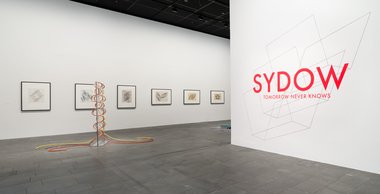

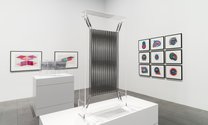
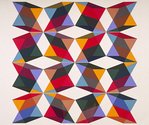
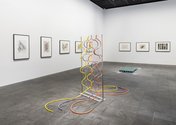
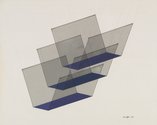
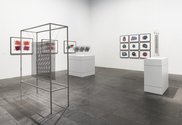
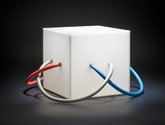
 Two Rooms presents a program of residencies and projects
Two Rooms presents a program of residencies and projects Advertising in this column
Advertising in this column



This Discussion has 0 comments.
Comment
Participate
Register to Participate.
Sign in
Sign in to an existing account.